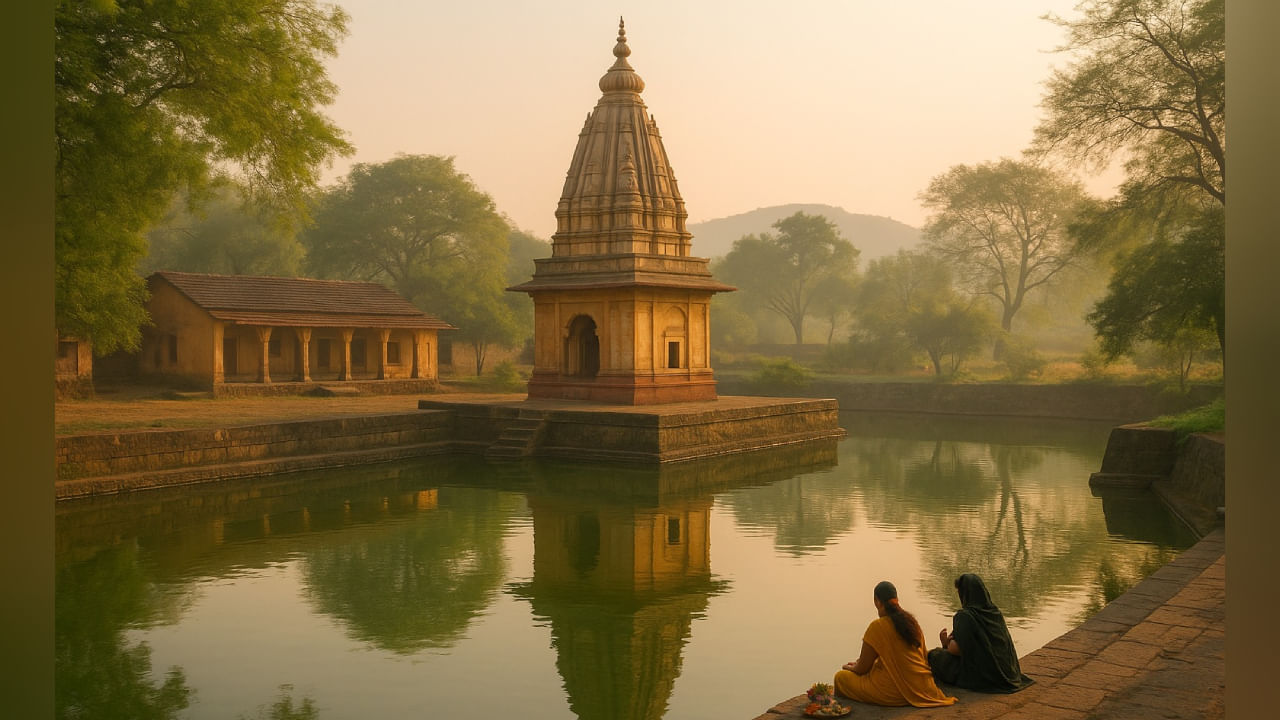Mumbai: Tucked away near the historic Ellora Caves in Maharashtra lies one of the most spiritually revered sites in India — the Ghushmeshwar Jyotirlinga. Recognised as the twelfth and final Jyotirlinga among the twelve sacred abodes of Lord Shiva, this divine shrine is more than just a pilgrimage spot. It is a ray of hope for countless childless couples who journey from far and wide, seeking the blessings of Bholenath (Lord Shiva) for the gift of a child.
Steeped in miracles and ancient legends, the Ghushmeshwar temple is believed to fulfil heartfelt desires — especially the longing for a child. Devotees say that even today, those struggling with infertility are blessed with children after offering prayers here. This unwavering faith has created an emotional bond between the temple and generations of worshippers who return with gratitude once their prayers are answered.
Miraculous Legacy of Life and Devotion
Among the many miracles associated with the Jyotirlinga, one tale stands out — the story of Lord Shiva reviving a devotee’s child at this very place. Since then, this temple has become synonymous with fertility blessings, with child-seeking couples placing immense faith in its divine power.
Where Is Ghushmeshwar Jyotirlinga Located?
The temple is situated in the village of Verul (also known as Bareli), near Daulatabad in Maharashtra. It’s just a few kilometres away from the world-famous Ajanta and Ellora caves. Devotees also refer to it as Ghushmeshwar Mahadev — a name inspired by a devout woman who is central to its origin story.
Ancient Legend Behind the Temple
As per the ancient texts, a Brahmin named Sudharma lived with his wife Sudeha on Devgiri Mountain. Unable to have children, and upon learning that Sudeha could not conceive, she convinced her husband to marry her younger sister, Ghushma. A devoted follower of Lord Shiva, Ghushma worshipped 101 parthiv (clay) Shivlings daily and immersed them in a sacred pond.
Eventually, Ghushma gave birth to a beautiful son, igniting jealousy in Sudeha. Driven by envy, Sudeha threw the child into the same pond where Ghushma performed her daily ritual. The next morning, despite the shocking news of her son’s death, Ghushma remained undisturbed in her devotion. When she returned to the pond for her daily immersion of the Shivlings, Lord Shiva appeared before her and resurrected her child.
Angered by Sudeha’s deed, Shiva raised his trishul (trident), ready to punish her. But Ghushma intervened, asking the Lord to forgive her sister. Moved by her compassion, Shiva not only granted the wish but also asked her to seek a boon. Ghushma humbly requested that Shiva reside there permanently for the welfare of mankind. Pleased, he agreed — and thus, the temple was named Ghushmeshwar Jyotirlinga in her honour.
The Sacred Pond Still Exists
Devotees believe the very pond where Ghushma immersed her Shivlings still exists within the temple premises. Even today, it is visited with deep reverence by childless couples who believe that its mere sight can fulfil their long-held wishes for parenthood.
(Disclaimer: The information provided is based on traditional beliefs and religious texts. News9 Live does not endorse or validate these claims.)
